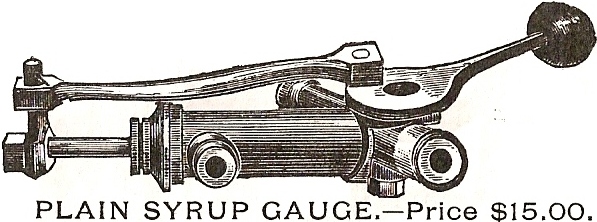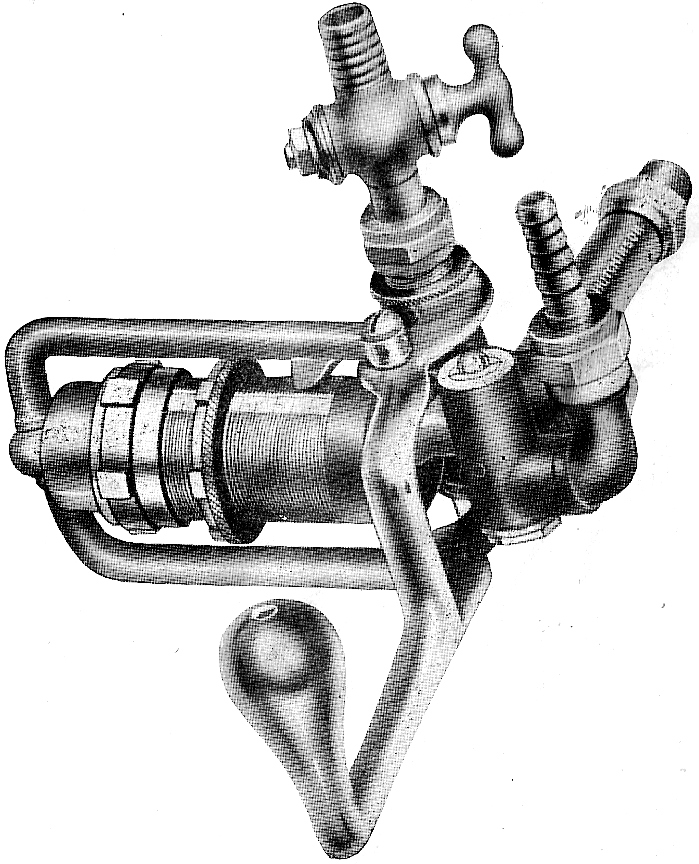Syrup Gauges
Once the valves controlling the carbonated water and syrup lines were
opened, a

The
W. H. Hutchinson and Son
1908 Bottler’s Book listed the following “

When
the arm on the syrup gauge was pulled forward, a valve automatically
opened causing a rush of carbonated water to wash the syrup and
carbonated water thru the filling head and into the bottle.
If the table didn’t have an optional automatic snifting valve,
the head assembly had to be raised two or three times in order for the
trapped air to escape, allowing more soda to flow until the bottle was
properly filled. Snifting
was a highly important step in the bottling process.
The 1910 W. H.
Hutchinson and Son Bottlers’ Supplies catalog emphasized:
Probably the most important item in the process is the
snifting. In this operation
the atmospheric air in the bottles is driven out and replaced by the
carbonic acid gas. If done
too hastily there is danger of loss of gas and the product resulting
will not be under high enough pressure.
If not snifted sufficiently, air will remain in the bottles,
depreciating the sparkling appearance so much desired and rendering
fermentation possible, and in fact probable.
Another carbonic acid gas saving invention perfected
during the latter years of the
The foot snifting process was another standard
bottling procedure impacted by introduction of the crown cork system.
The 1917 W. H.
Hutchinson & Son Catalog and Price List cautioned:
When using the old Hutchinson Stopper, now out of
date, it was the custom to snift with the foot, a practice which enabled
the bottler to fill
 HutchBook.com
HutchBook.com